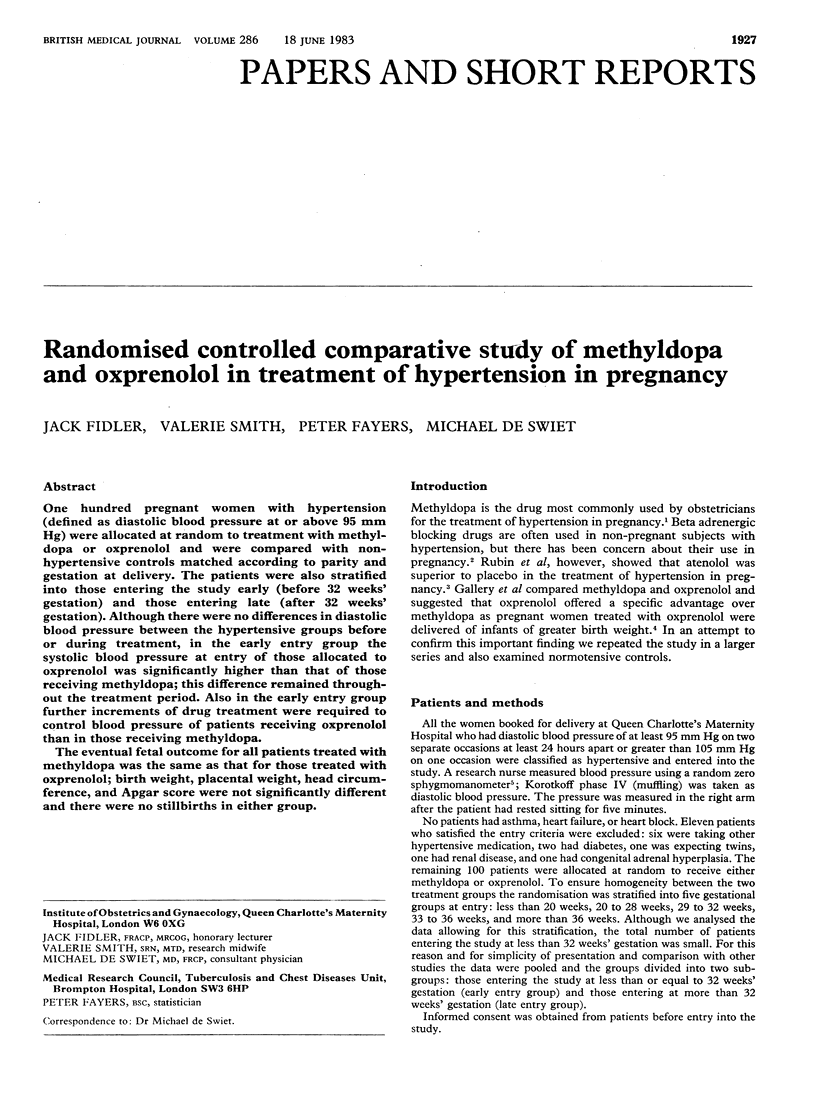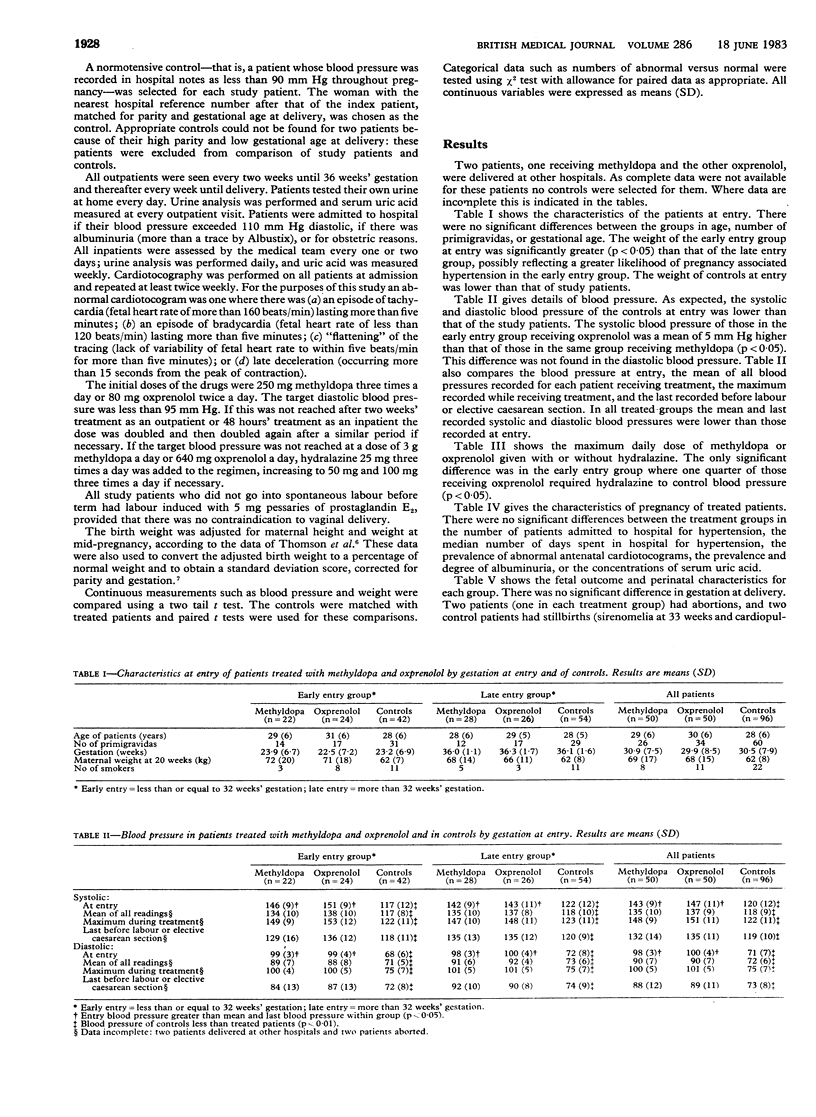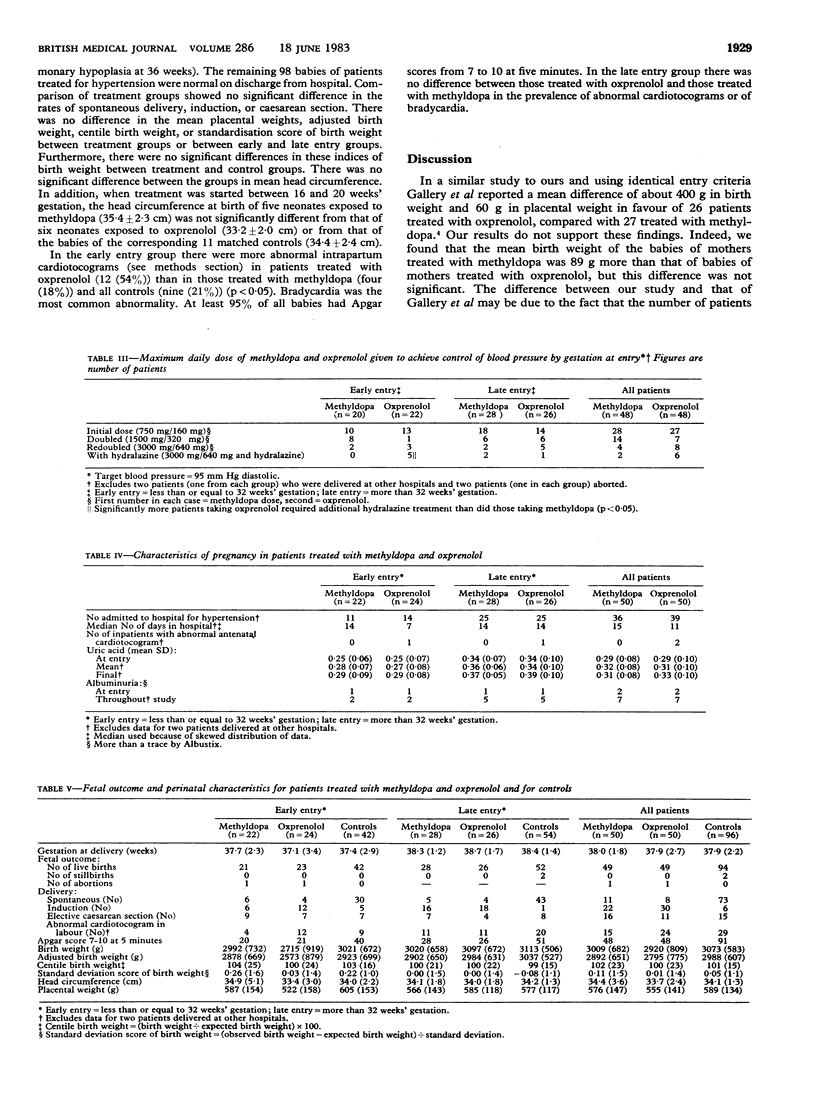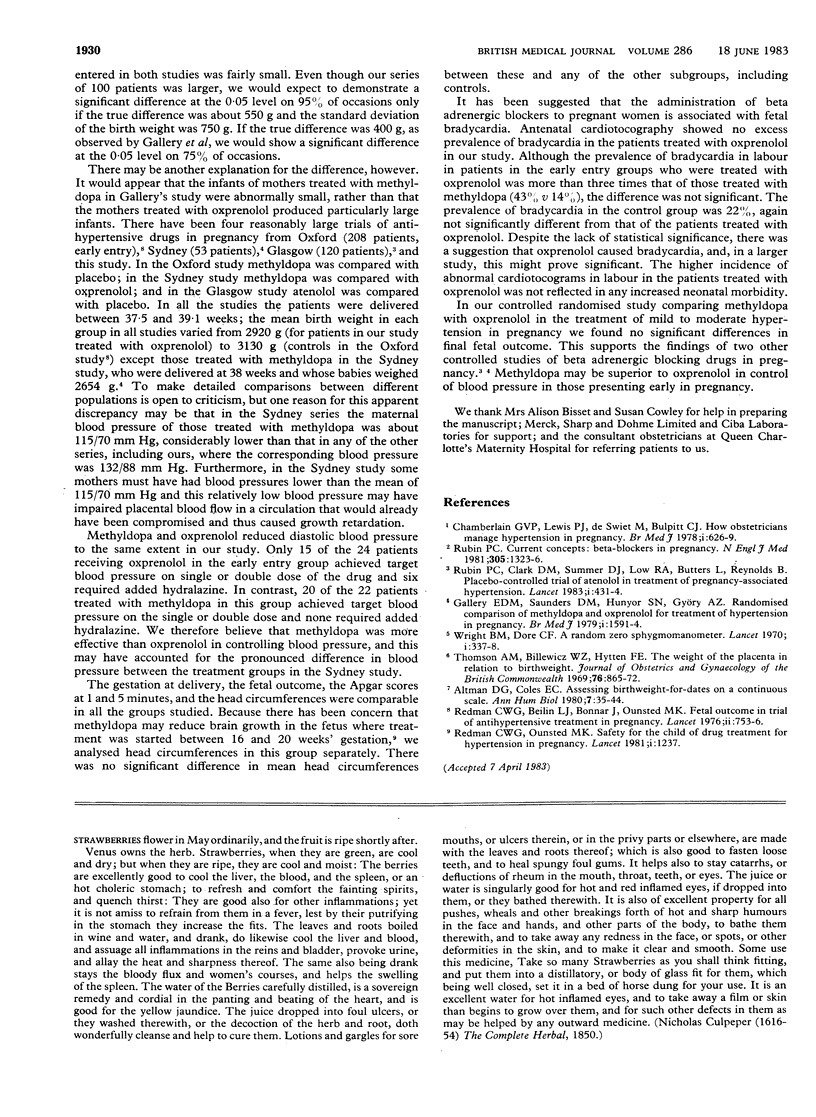Abstract
One hundred pregnant women with hypertension (defined as diastolic blood pressure at or above 95 mm Hg) were allocated at random to treatment with methyldopa or oxprenolol and were compared with nonhypertensive controls matched according to parity and gestation at delivery. The patients were also stratified into those entering the study early (before 32 weeks' gestation) and those entering late (after 32 weeks' gestation). Although there were no differences in diastolic blood pressure between the hypertensive groups before or during treatment, in the early entry group the systolic blood pressure at entry of those allocated to oxprenolol was significantly higher than that of those receiving methyldopa; this difference remained throughout the treatment period. Also in the early entry group further increments of drug treatment were required to control blood pressure of patients receiving oxprenolol than in those receiving methyldopa. The eventual fetal outcome for all patients treated with methyldopa was the same as that for those treated with oxprenolol; birth weight, placental weight, head circumference, and Apgar score were not significantly different and there were no stillbirths in either group.
Full text
PDF



Selected References
These references are in PubMed. This may not be the complete list of references from this article.
- Altman D. G., Coles E. C. Assessing birth weight-for-dates on a continuous scale. Ann Hum Biol. 1980 Jan-Feb;7(1):35–44. doi: 10.1080/03014468000004031. [DOI] [PubMed] [Google Scholar]
- Chamberlain G. V., Lewis P. J., De Swiet M., Bulpitt C. J. How obstetricians manage hypertension in pregnancy. Br Med J. 1978 Mar 11;1(6113):626–629. doi: 10.1136/bmj.1.6113.626. [DOI] [PMC free article] [PubMed] [Google Scholar]
- Gallery E. D., Saunders D. M., Hunyor S. N., Györy A. Z. Randomised comparison of methyldopa and oxprenolol for treatment of hypertension in pregnancy. Br Med J. 1979 Jun 16;1(6178):1591–1594. doi: 10.1136/bmj.1.6178.1591. [DOI] [PMC free article] [PubMed] [Google Scholar]
- Jaffe M. D. High-flow dilatation. Lancet. 1981 Jun 6;1(8232):1237–1239. doi: 10.1016/s0140-6736(81)92404-1. [DOI] [PubMed] [Google Scholar]
- Redman C. W. Fetal outcome in trial of antihypertensive treatment in pregnancy. Lancet. 1976 Oct 9;2(7989):753–756. doi: 10.1016/s0140-6736(76)90597-3. [DOI] [PubMed] [Google Scholar]
- Rubin P. C., Butters L., Clark D. M., Reynolds B., Sumner D. J., Steedman D., Low R. A., Reid J. L. Placebo-controlled trial of atenolol in treatment of pregnancy-associated hypertension. Lancet. 1983 Feb 26;1(8322):431–434. [PubMed] [Google Scholar]
- Rubin P. C. Current concepts: beta-blockers in pregnancy. N Engl J Med. 1981 Nov 26;305(22):1323–1326. doi: 10.1056/NEJM198111263052205. [DOI] [PubMed] [Google Scholar]
- Thomson A. M., Billewicz W. Z., Hytten F. E. The weight of the placenta in relation to birthweight. J Obstet Gynaecol Br Commonw. 1969 Oct;76(10):865–872. doi: 10.1111/j.1471-0528.1969.tb15722.x. [DOI] [PubMed] [Google Scholar]
- Wright B. M., Dore C. F. A random-zero sphygmomanometer. Lancet. 1970 Feb 14;1(7642):337–338. doi: 10.1016/s0140-6736(70)90709-9. [DOI] [PubMed] [Google Scholar]


